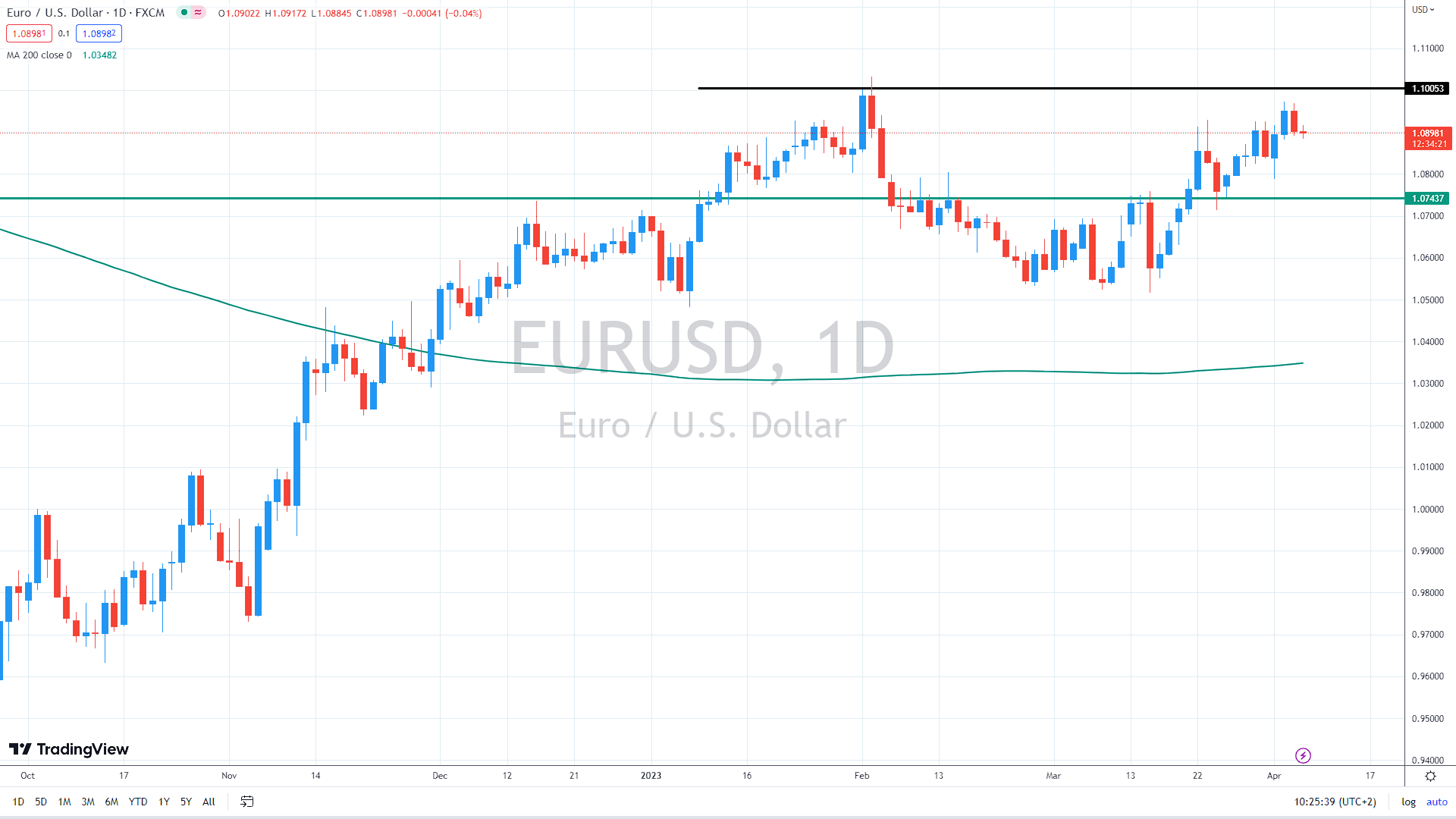The EUR/USD pair remains in a medium-term uptrend, and bulls will likely attack the critical 1.10 resistance anytime soon.
EU data weakened again
According to official statistics from Eurostat, industrial producer prices in the eurozone decreased by a more significant amount than anticipated in February.
Compared to January, industrial costs declined 0.5% due to a 1.6% decline in energy prices. However, excluding the cost of electricity, overall industrial prices rose 0.2%.
In the eurozone and the European Union as a whole, industrial producer prices increased by 13.2% and 14.5%, respectively, annually. On the other hand, Germany, France, and Italy reported decreases in producer prices, while Spain had a gain of 2.2%.
Another interesting topic: NZD/USD posts 2-mth highs after surprise RBNZ rate hike
In other news, the German trade surplus remained unchanged at €16 billion in February, as both exports and imports increased somewhat. Exports gained 4% month-over-month to €136.7 billion, while imports rose 4.6% to €120.7 billion.
According to official statistics released on Thursday, industrial production in Germany declined in February, indicating that the industrial sector rebound is again losing momentum.
Industrial Output in the economic powerhouse of the Eurozone increased by 2.0% monthly, the federal statistics body Destatis said, compared to 0.1% predicted and 3.5% before. The annualized rate of German Industrial Production in February was 0.6%, compared to -1.6% in January and market estimates of -2.6%.
Recession worries returned
Fears of a downturn in the world’s largest economy and the related danger of contagion are gaining pace as a result of a string of lousy job data in the United States. A poor 19-month low in the US JOLTS Job Openings for February preceded the ADP Employment Change for March, which fell to 145,000 from the predicted 200,000 and the previously upwardly revised 265,000.
Similarly, the final March readings for S&P Global Composite and Services PMIs were negative, with the former falling to 52.3 from 53.3 preliminary estimates and the latter falling to 52.6 from 53.8 previously. In addition, the US ISM Services PMI for March decreased to 51.2 from 54.5 predicted and 55.1 before.
Furthermore, the International Monetary Fund cautioned on Wednesday that escalating geopolitical tensions, primarily between the United States and China, threaten the global economy, possibly impacting global production by 1% in five years and 2% in the long run.
You may also read: Natural gas experiences the worst quarter ever – more decline coming?
The weekly jobless claims data is scheduled for an appearance later today. Still, all eyes will be on Friday’s official employment report, with economists anticipating that the economy added 240,000 jobs in March, fewer than in February.
“Markets are clearly attaching more recessionary risks to the dollar, but… it appears that the Fed has not provided a solid anchor to rate expectations, so more subdued readings in key releases can certainly exert additional downward pressure on the dollar,” ING analysts wrote in a report.
The support for the current bullish narrative is at 1.075. As long as the euro trades above it, the uptrend remains intact. The target is at 1.10, and if the euro closes above it on a daily basis, it could be a major bullish signal, potentially pushing the EUR/USD pair toward 1.15.

EUR/USD daily chart, source: author´s analysis, tradingview.com











Comments
Post has no comment yet.